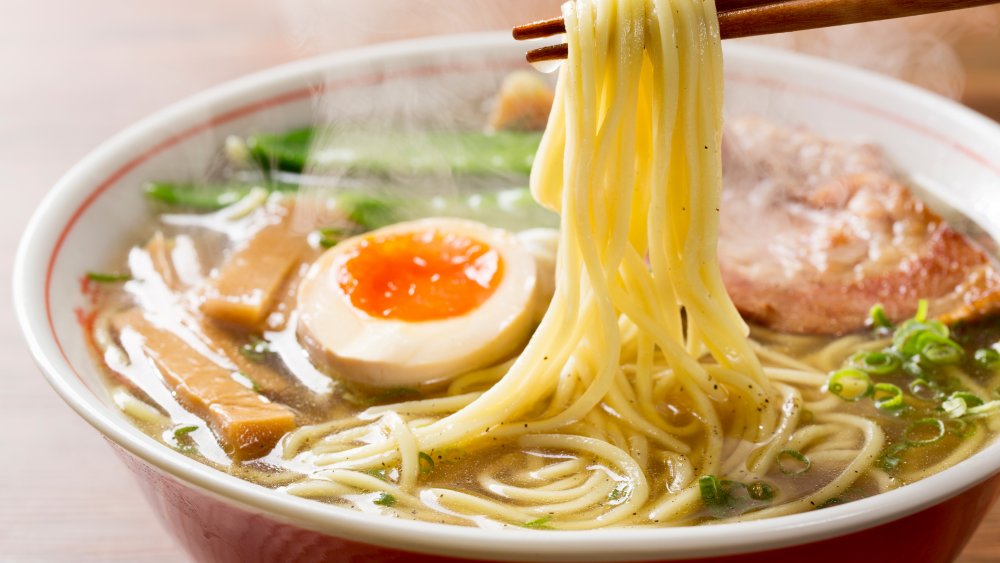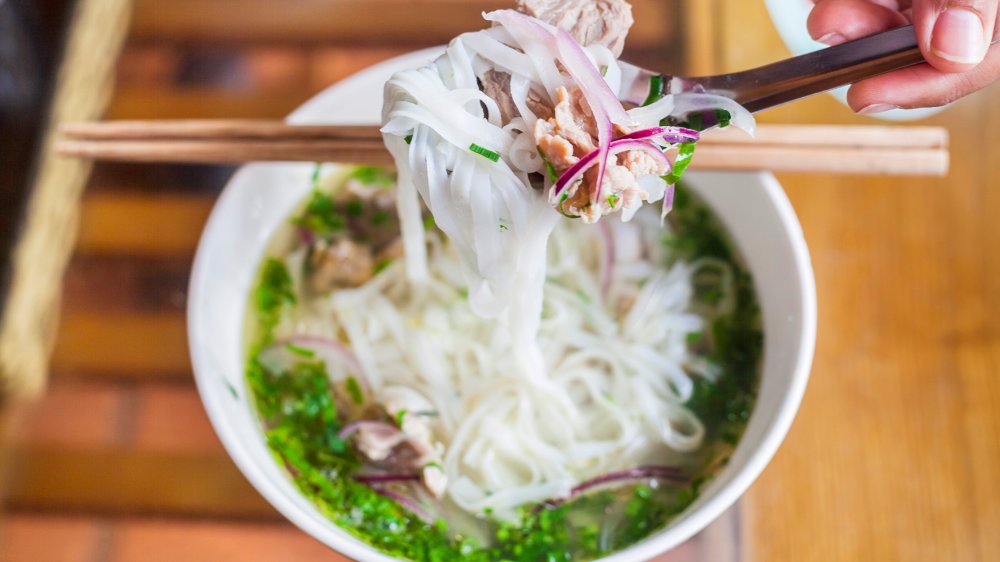Pho Vs. Ramen: What's The Difference?
When the temperature drops, it means one thing: It's soup season. On cold nights, it's pretty likely that when you reach for a dinner recipe, you'll be reaching for the warmth and comfort that only a steaming bowl of soup can provide. If you don't feel like cooking, takeout is always an option, and according to Grubhub, soup will be high up on that list, too. If you're thinking of having soup delivered tonight, ramen and pho are two likely — and extremely delicious — choices, but what's the difference between the two? Here's what you need to know next time you're deciding between pho and ramen.
While both soups are noodle-heavy dishes from Asia, that's about where the similarity ends. Pho hails from Vietnam, likely by way of China, according to Spoon University. Ramen, on the other hand, though also of Chinese origin, is a staple of Japan's street food scene, according to Japan Guide, and bears very little resemblance to the cheap packaged stuff you probably ate in college, though you can get it close with an upgrade or two.
These are the biggest differences between pho and ramen
Though they're mostly noodles and broth, pho and ramen differ greatly with both components. Pho noodles are made of rice and usually served separate from the broth, which is the foundation of any good bowl of the Vietnamese comfort food. According to Chowhound, it's the inclusion of star anise, cinnamon, and clove that gives the bone broth its signature flavor. Where the rice noodles in pho are very delicate, ramen boasts thicker wheat or egg noodles with a firm and springy texture. You'll find them in a richer broth, too, whipped up with — among other bases — umami-rich Japanese staples like miso and soy.
The final difference between ramen and pho is in the toppings. In pho you'll often find thinly sliced meat — everything from chicken to beef to organ meat like tripe; herbs like cilantro and basil; jalapeño; lime; and a handful of bean sprouts served with a side of hoisin and sriracha sauce that you can mix in to adjust the heat or sweetness to your liking, according to Spoon University's pho explainer. Ramen, on the other hand, is usually topped with thicker cuts of pork belly, wood ear mushrooms, bamboo shoots, nori, and — most importantly — ajitsuke tamago, a soft-boiled egg that's been marinated in a soy mixture (via Just One Cookbook).
Next time you're looking at a takeout decision that boils down to pho vs. ramen, you can rest assured knowing that either will provide a bowl of comfort, with enough difference between them to satisfy a variety of cravings.

